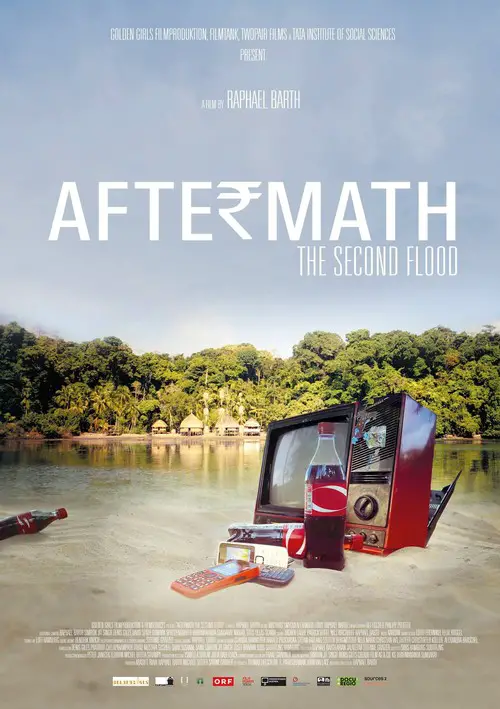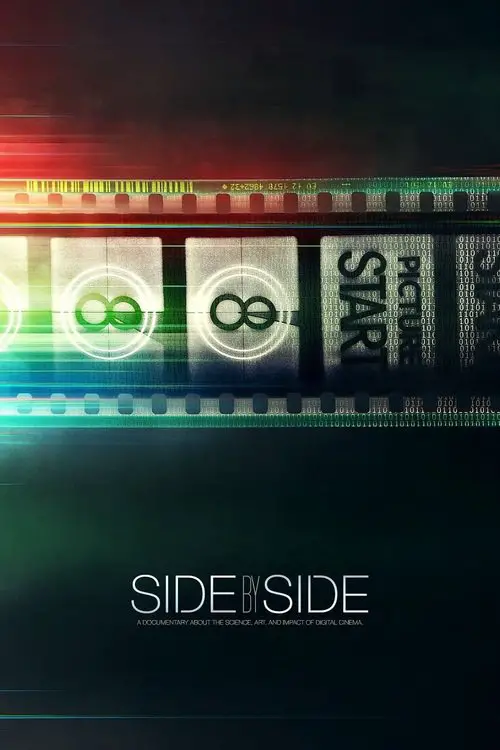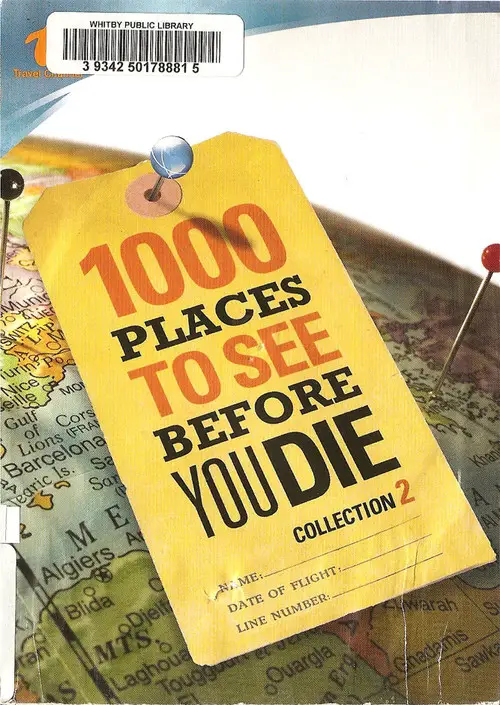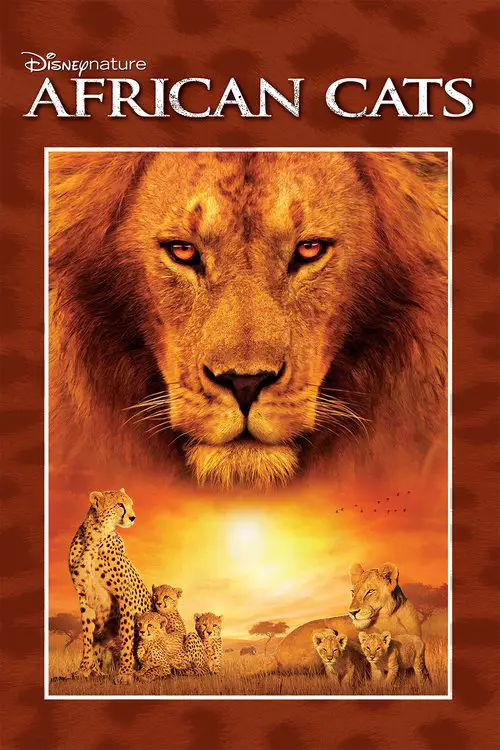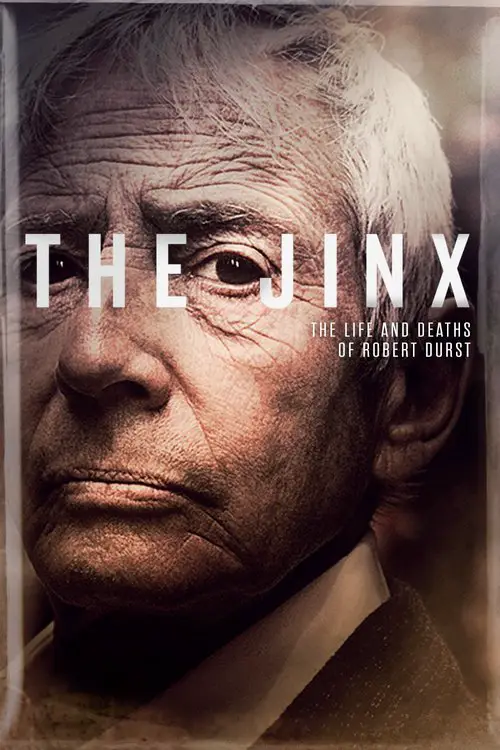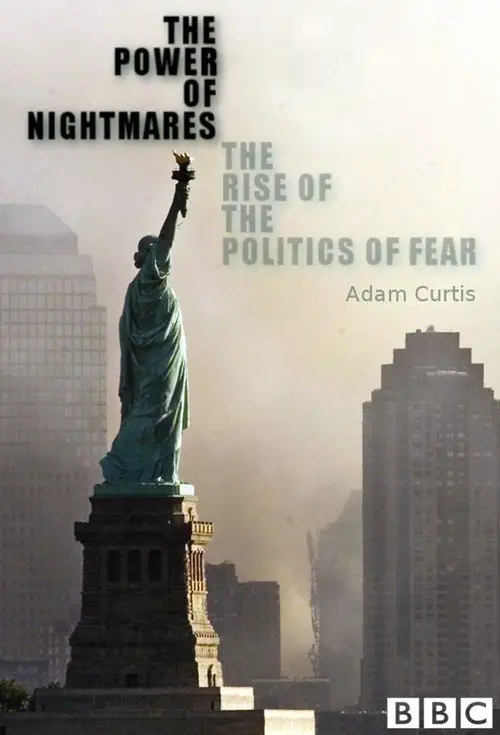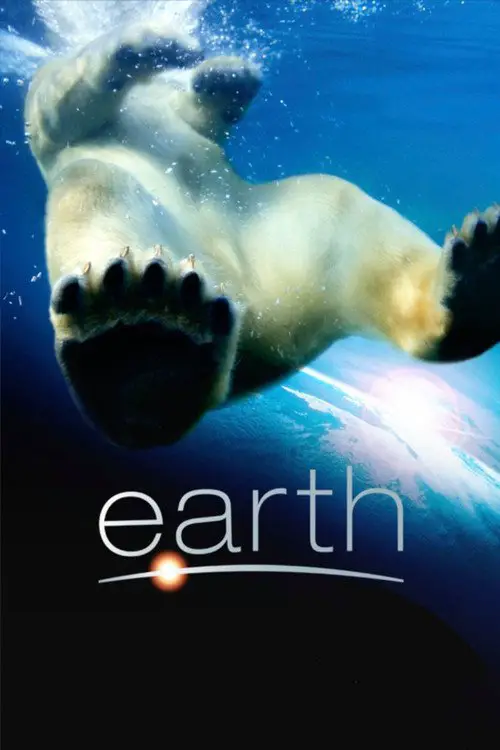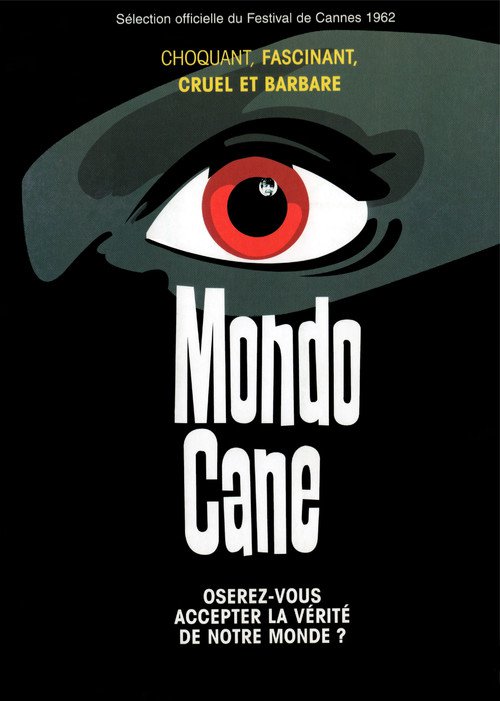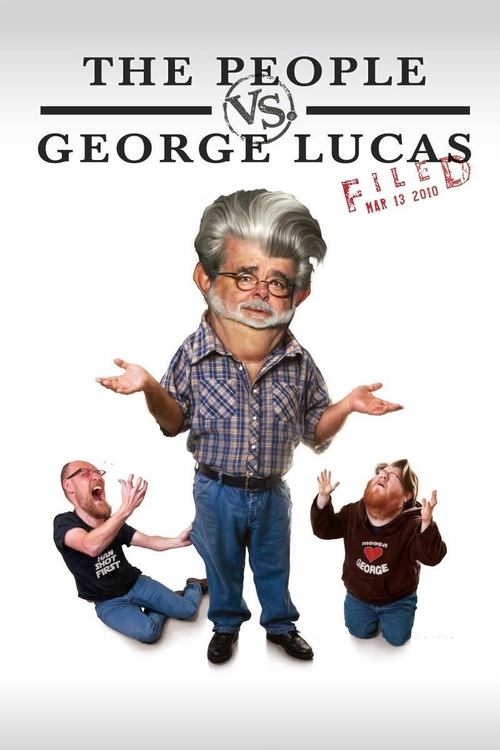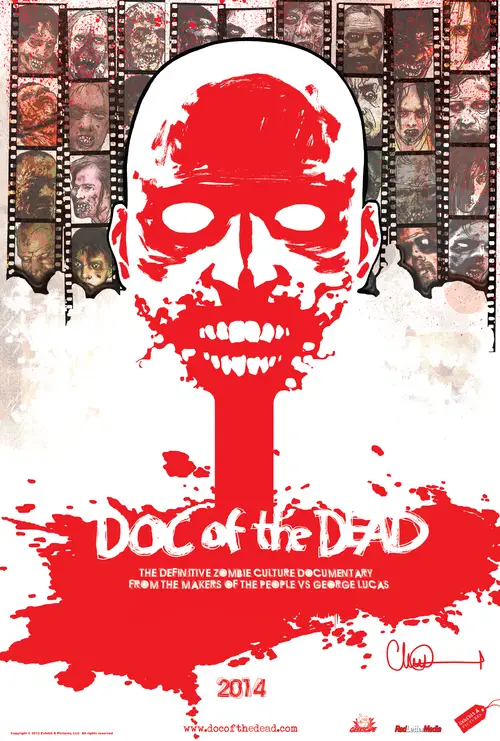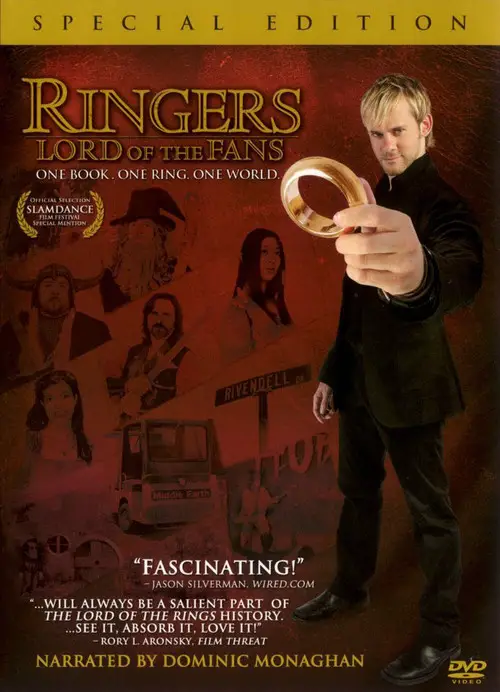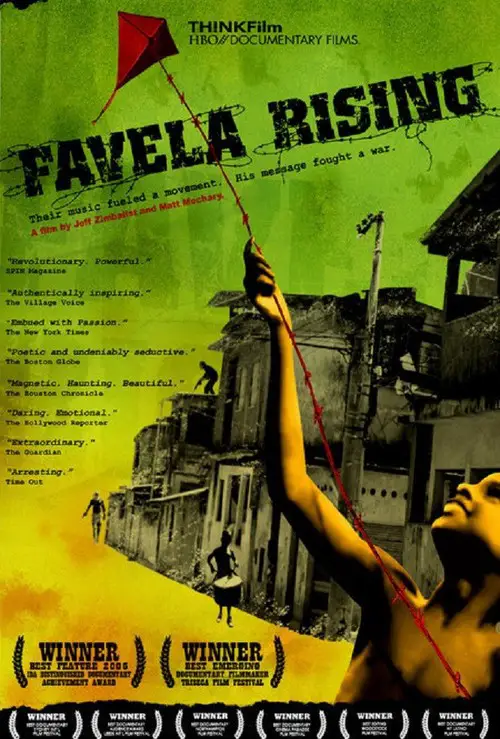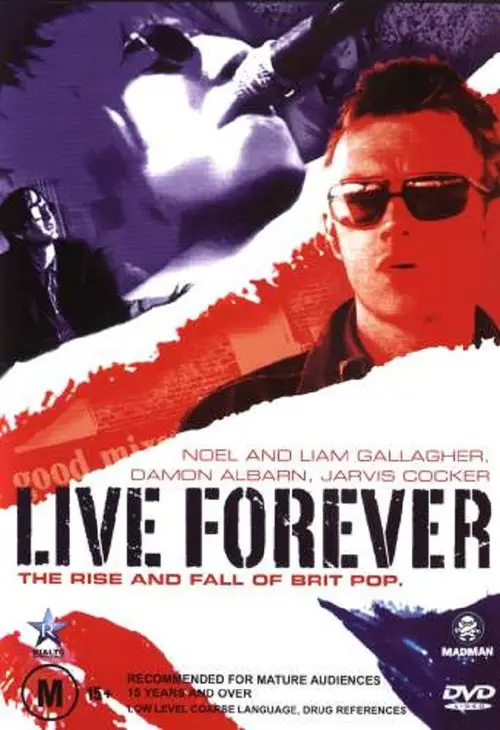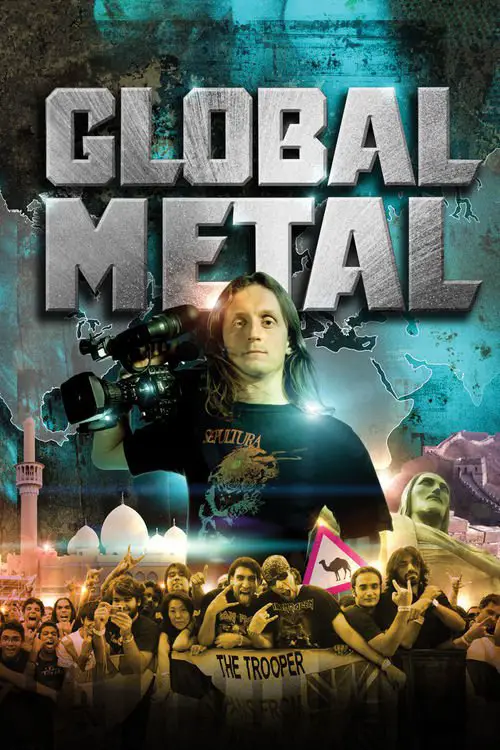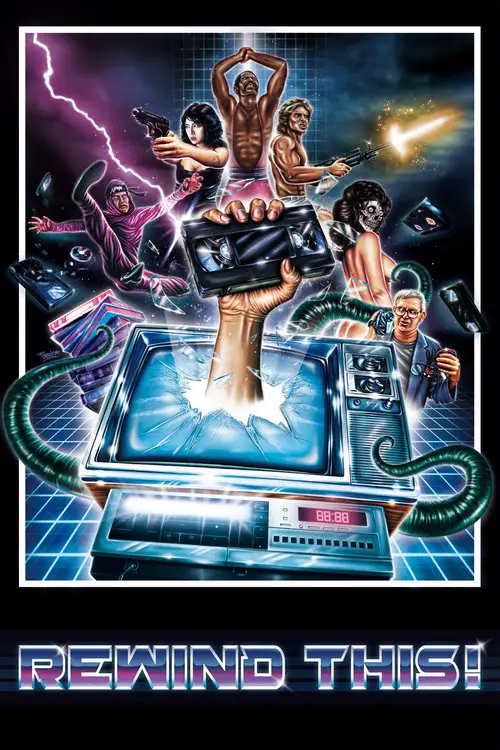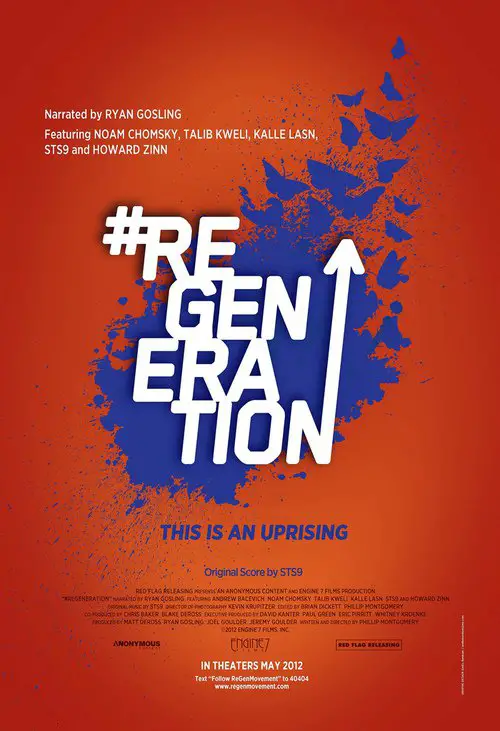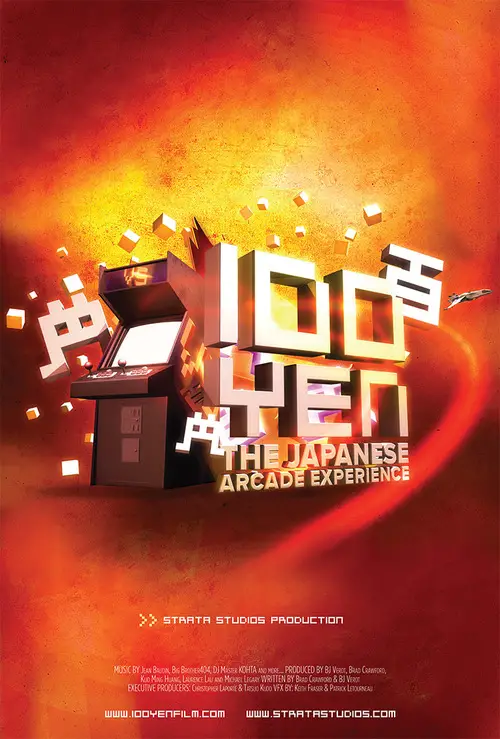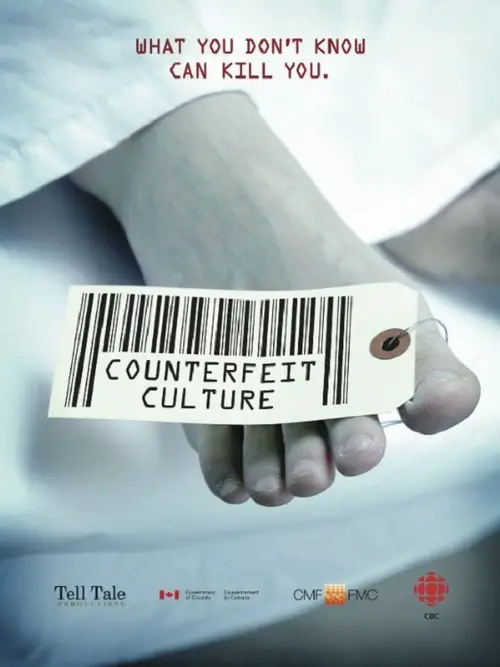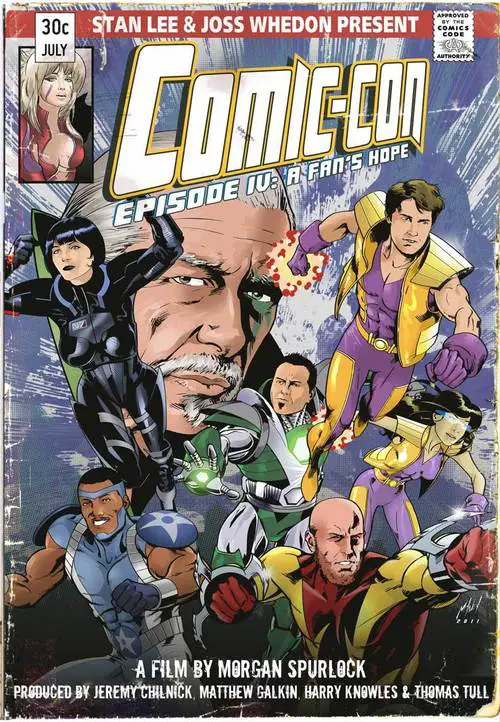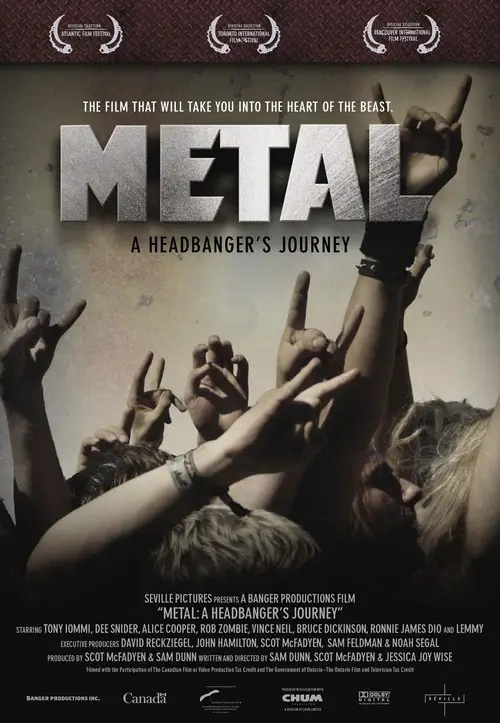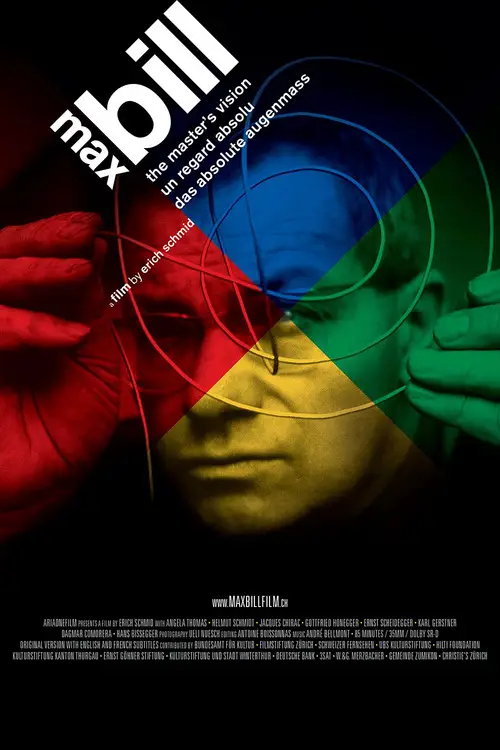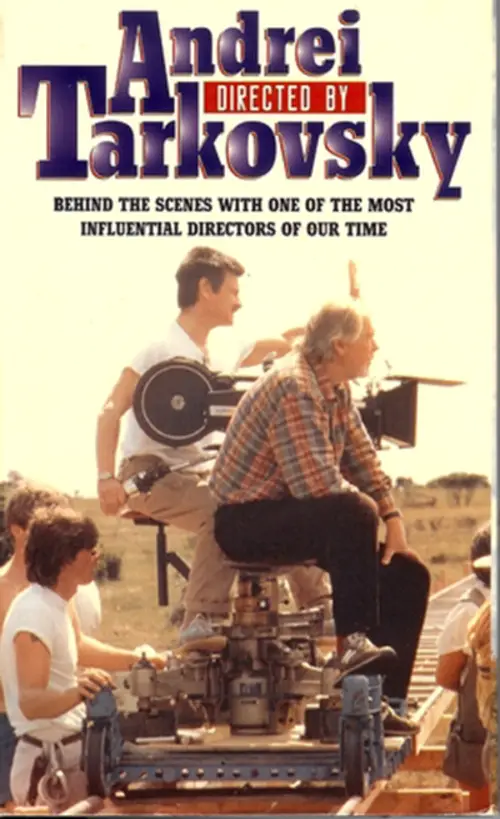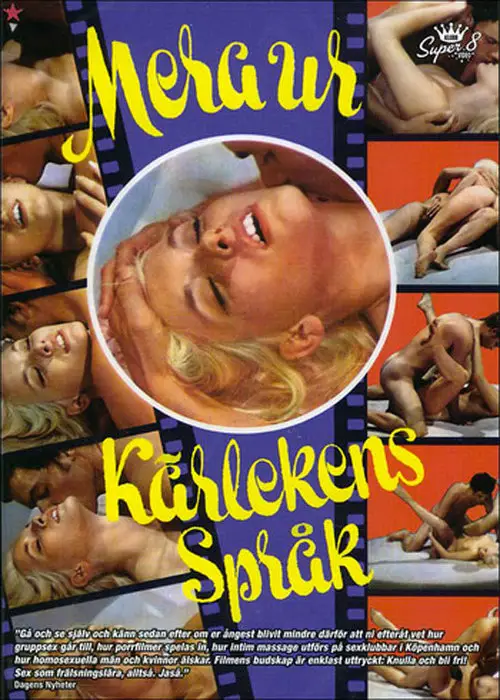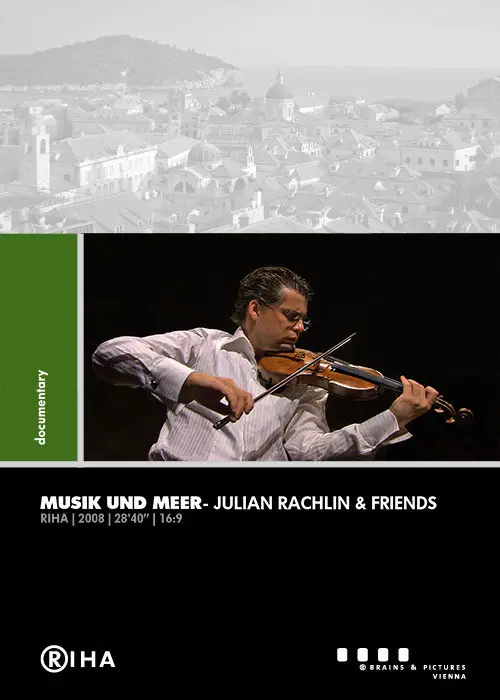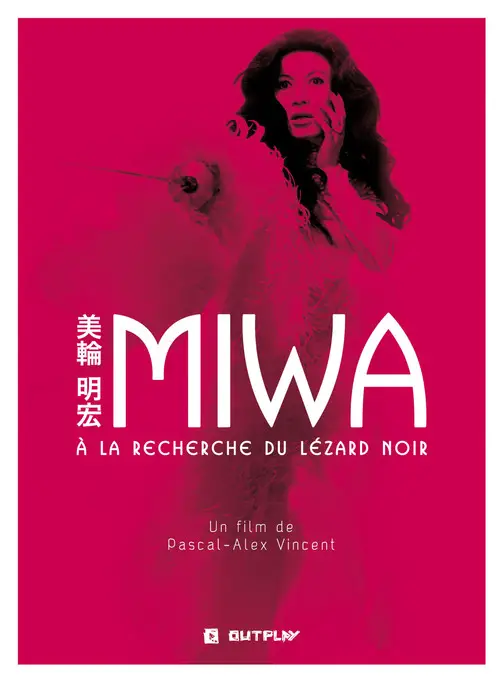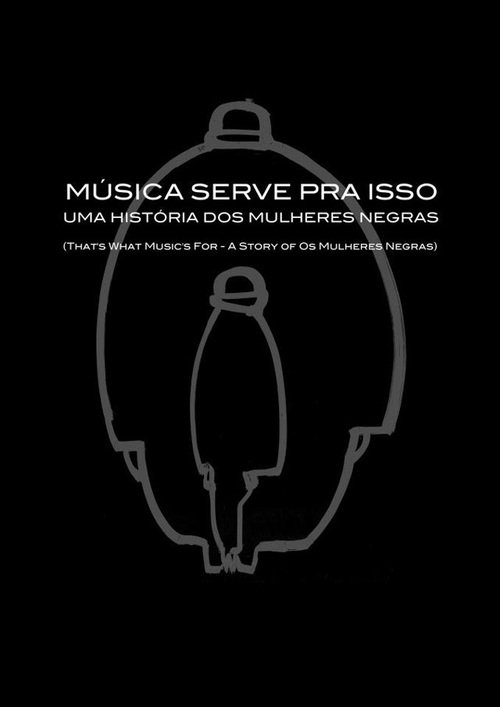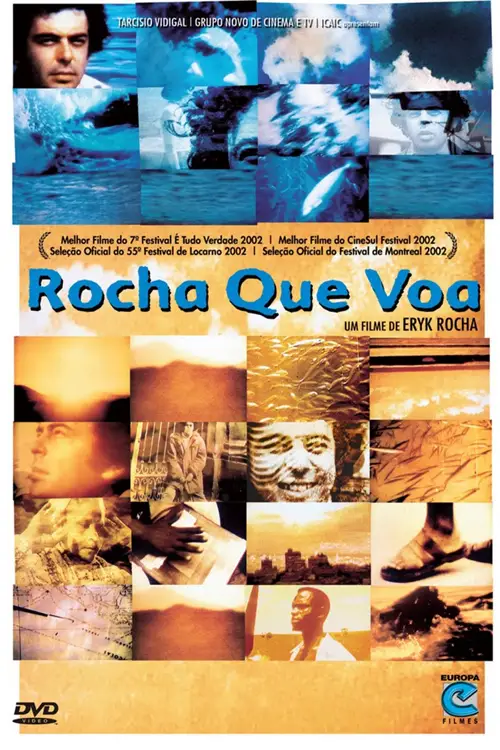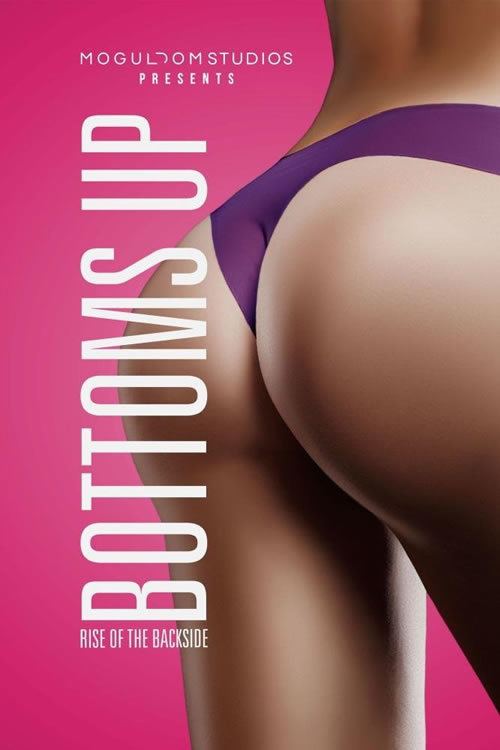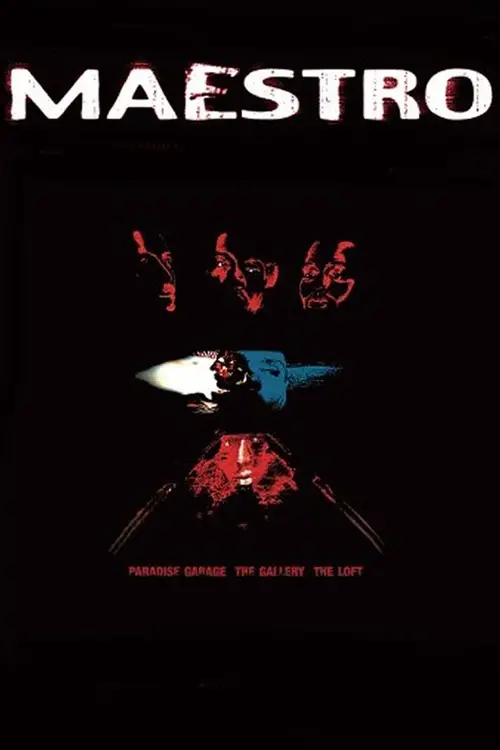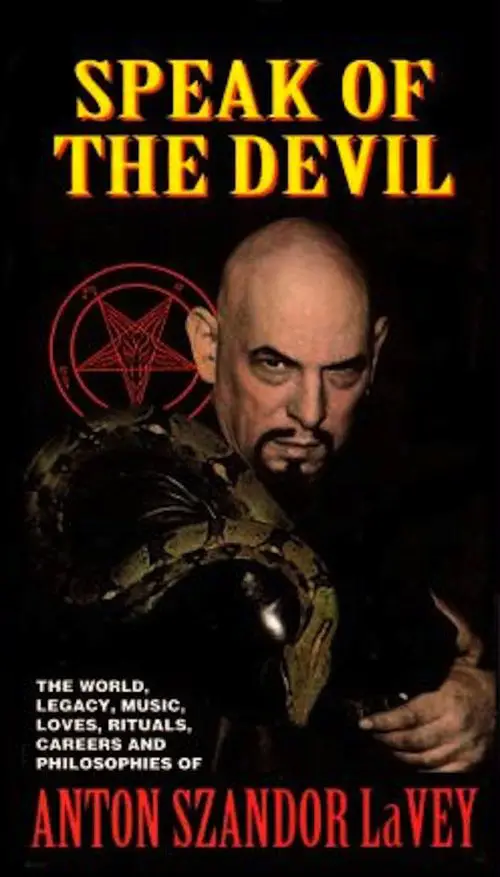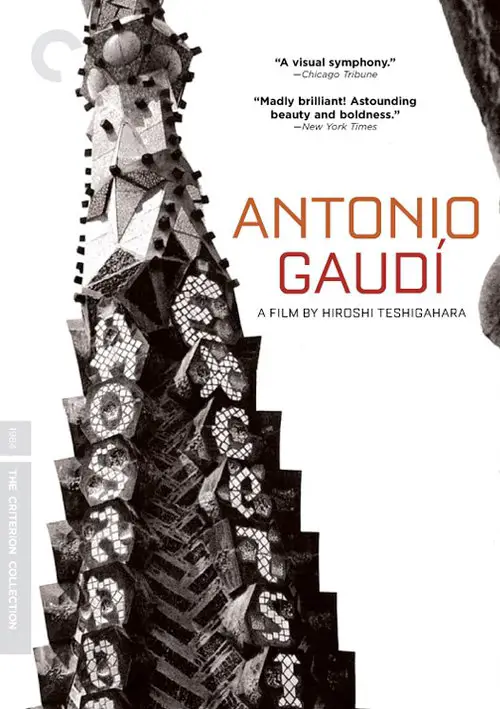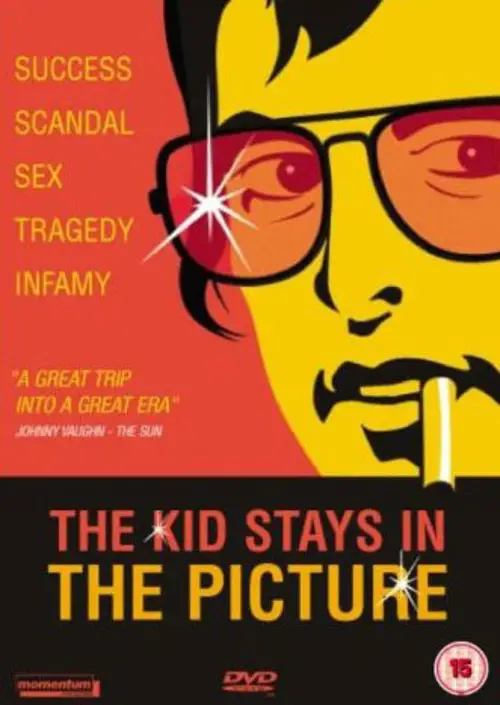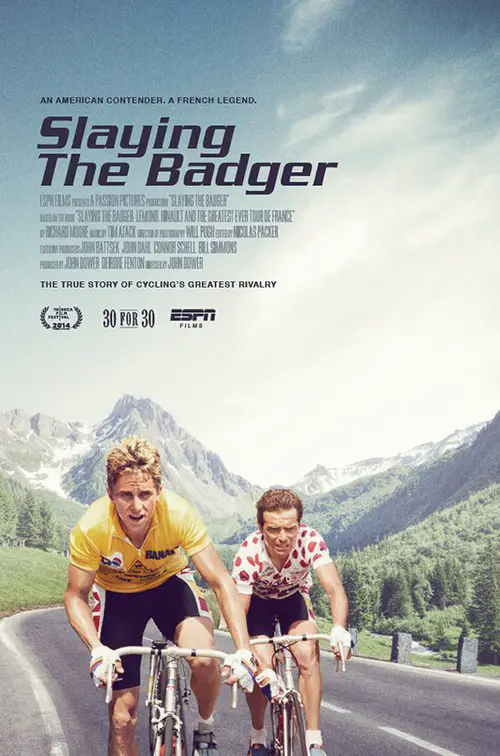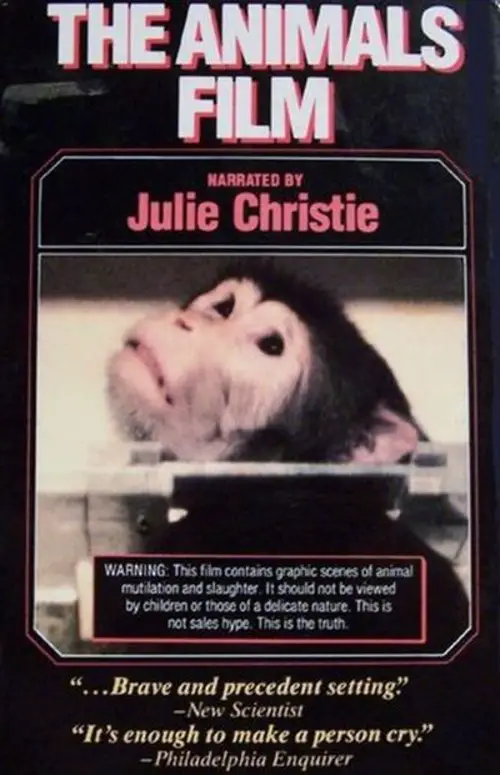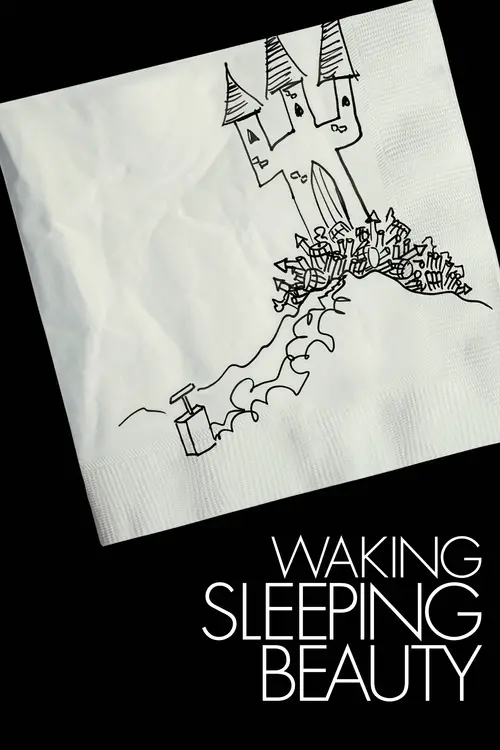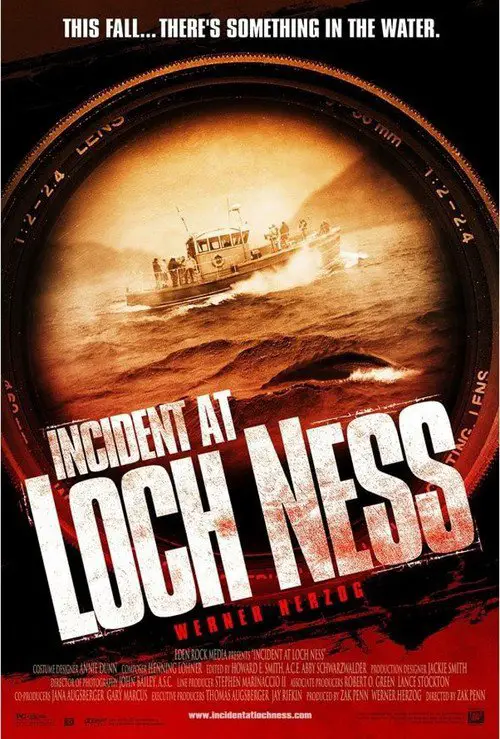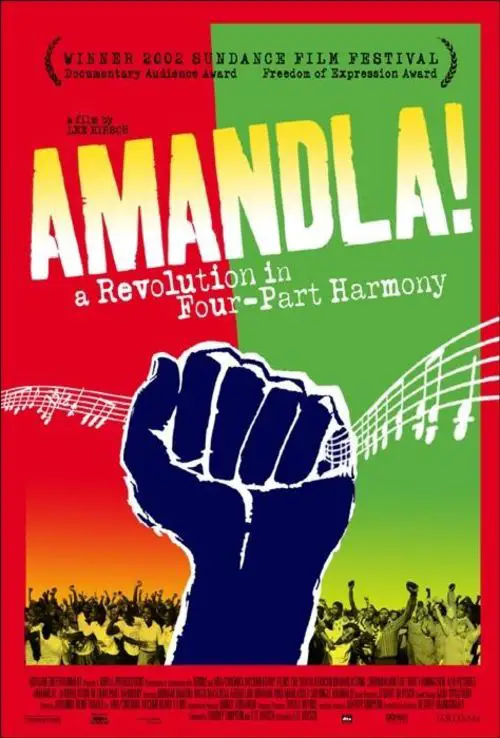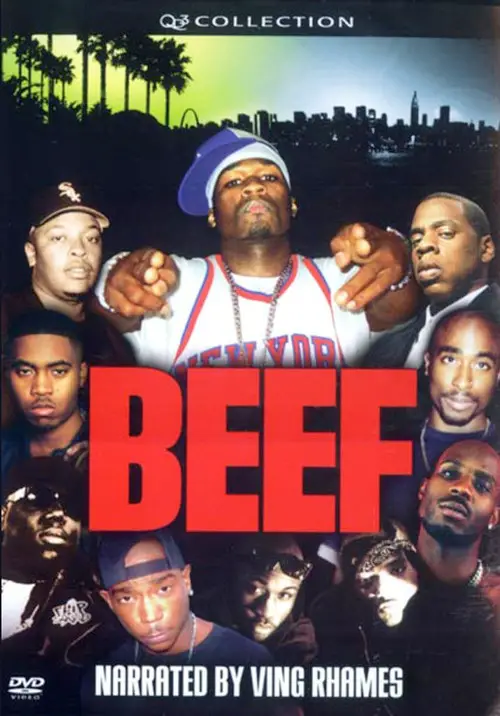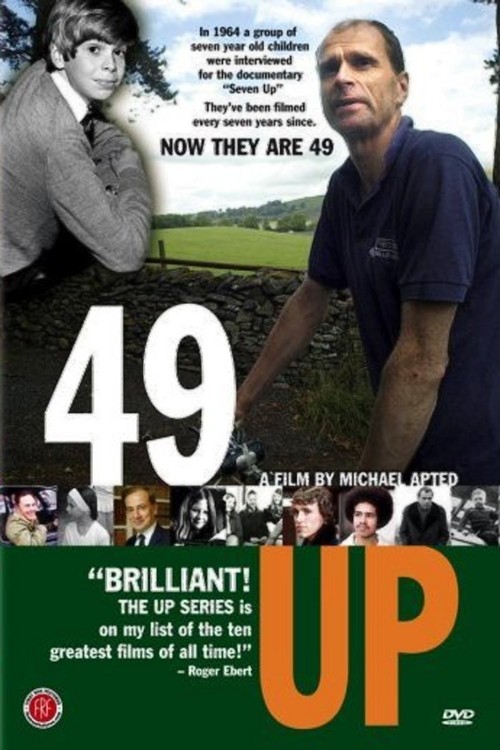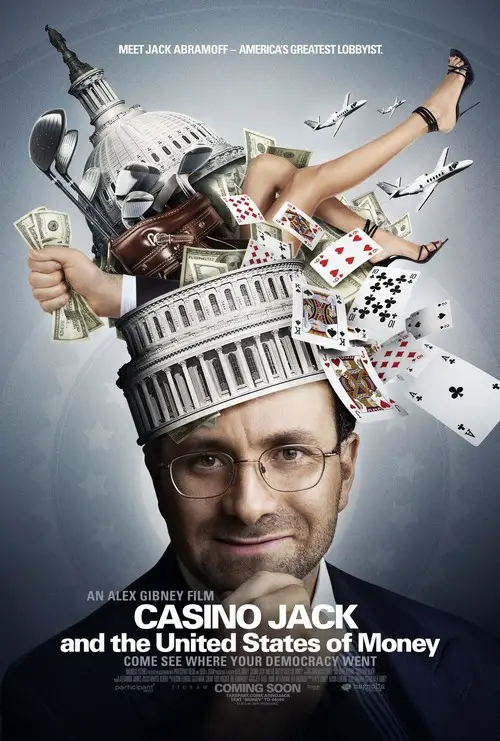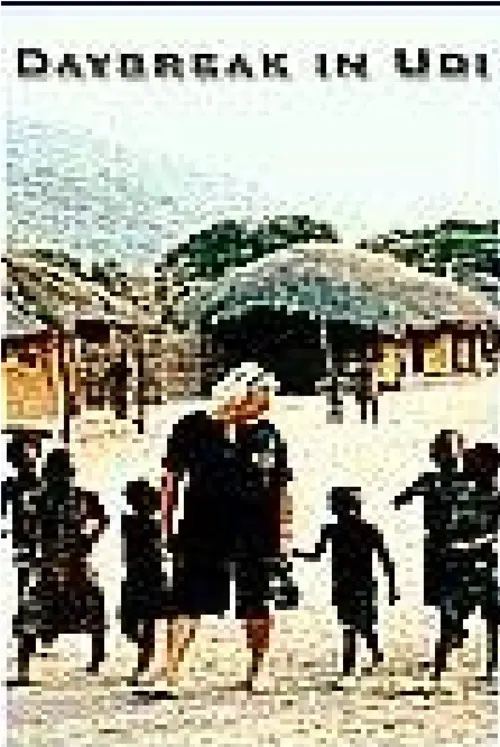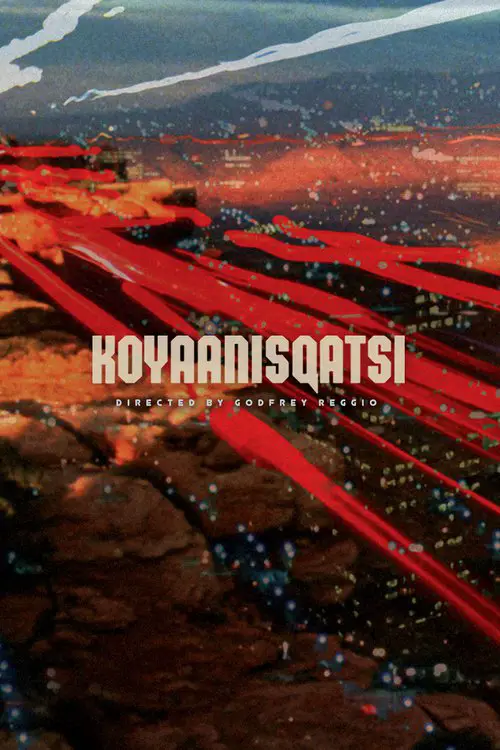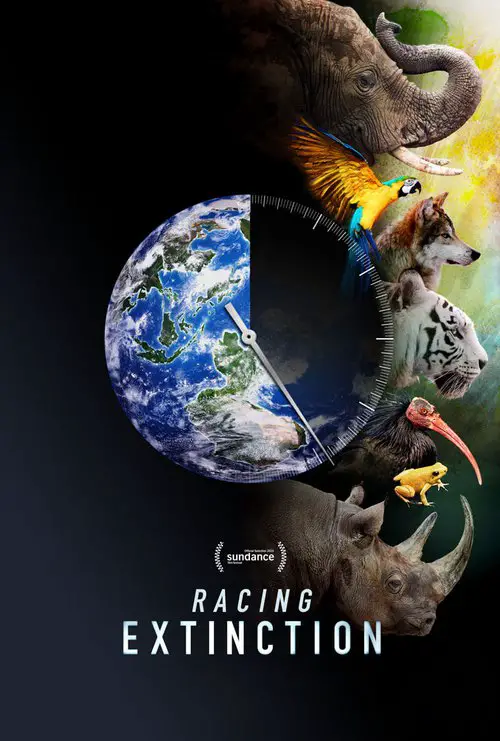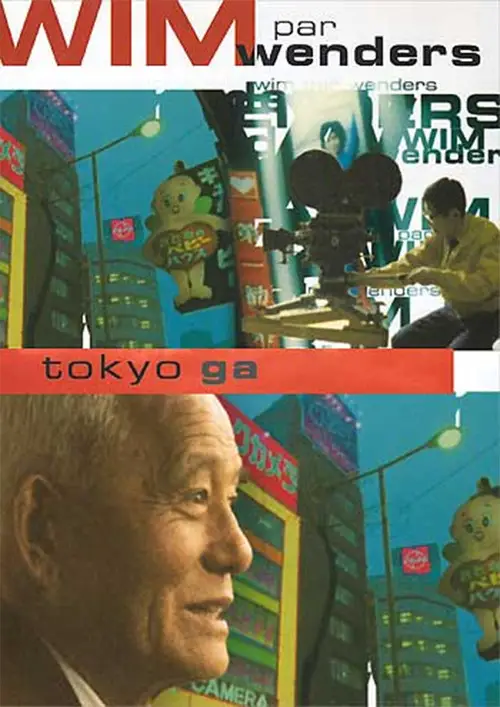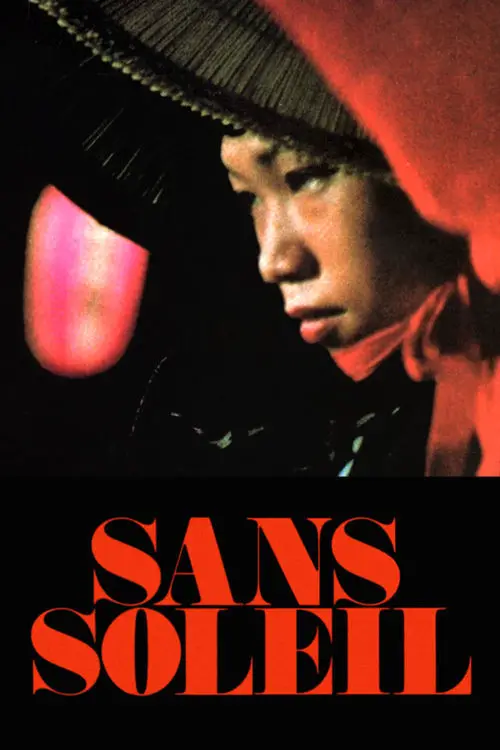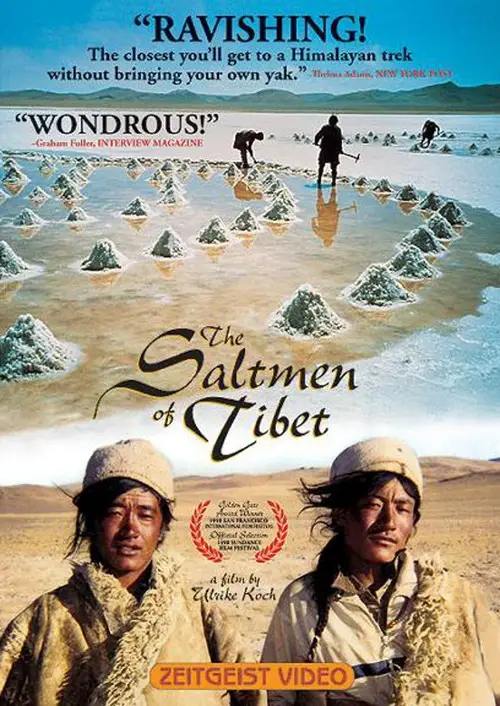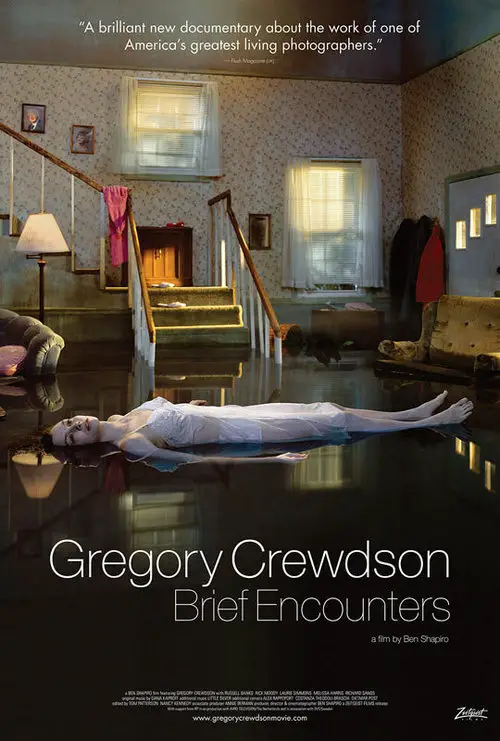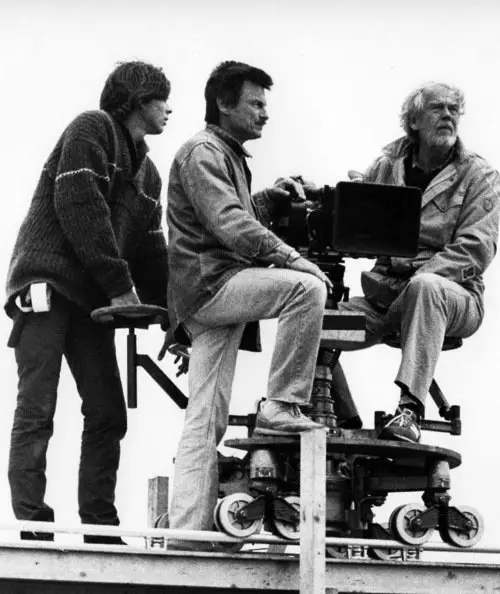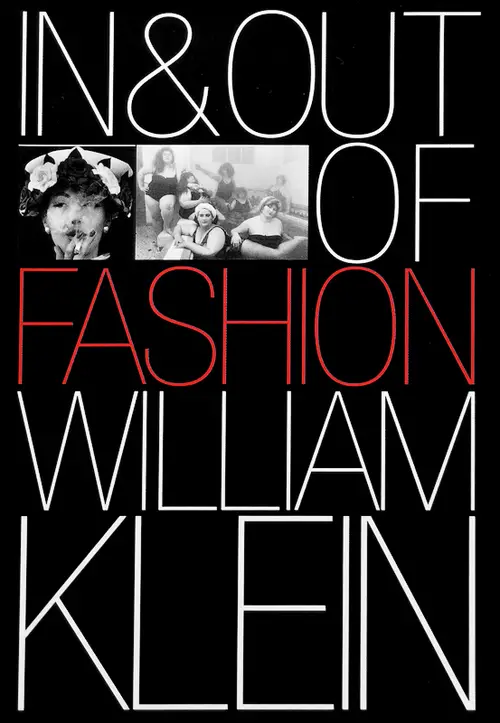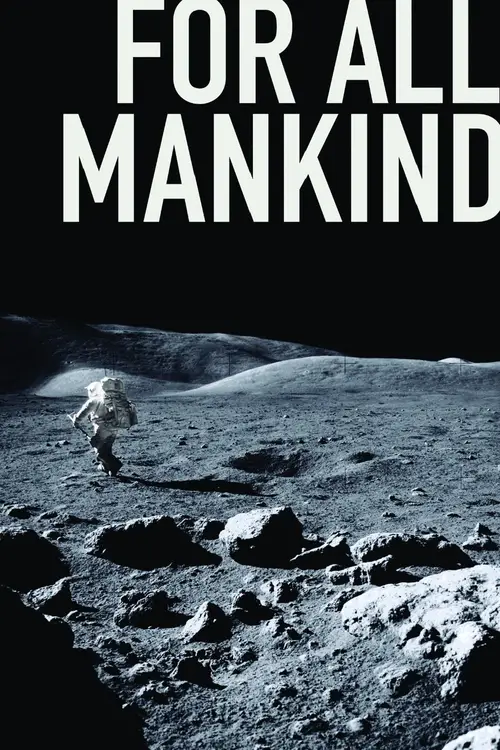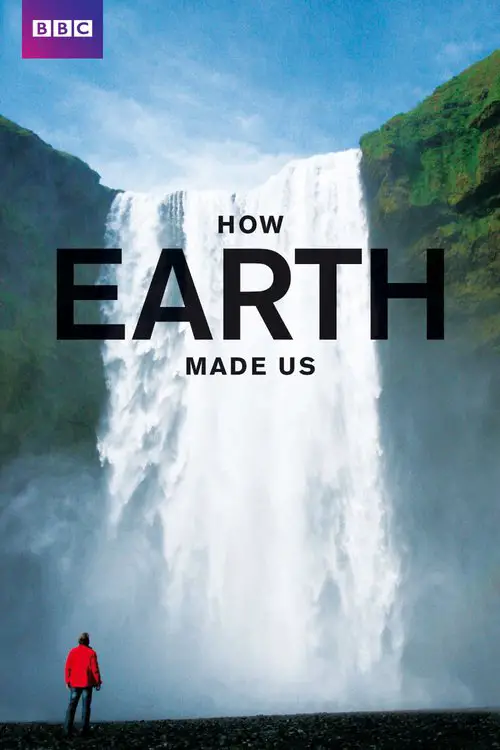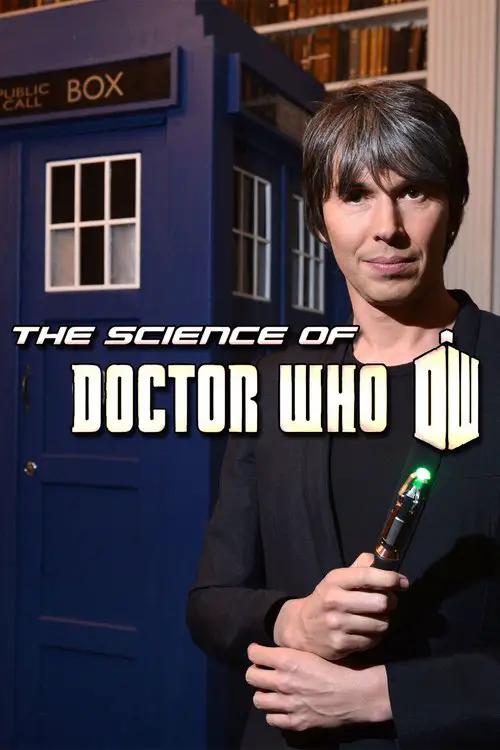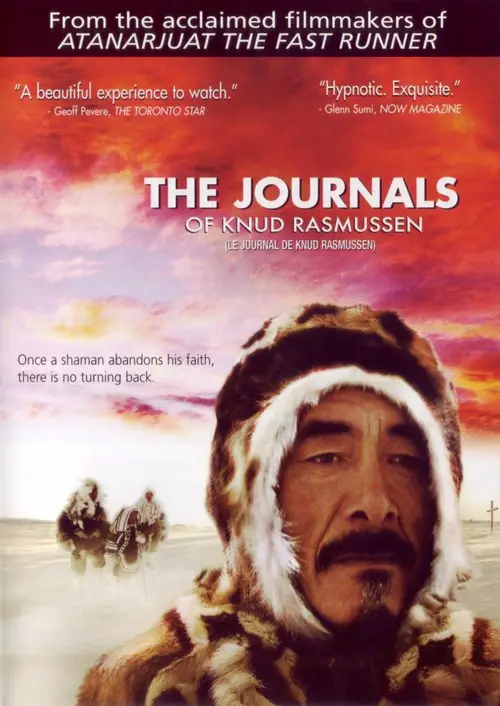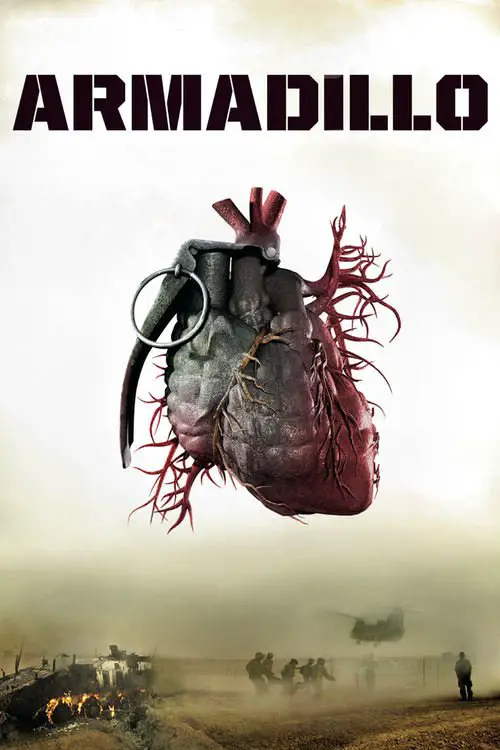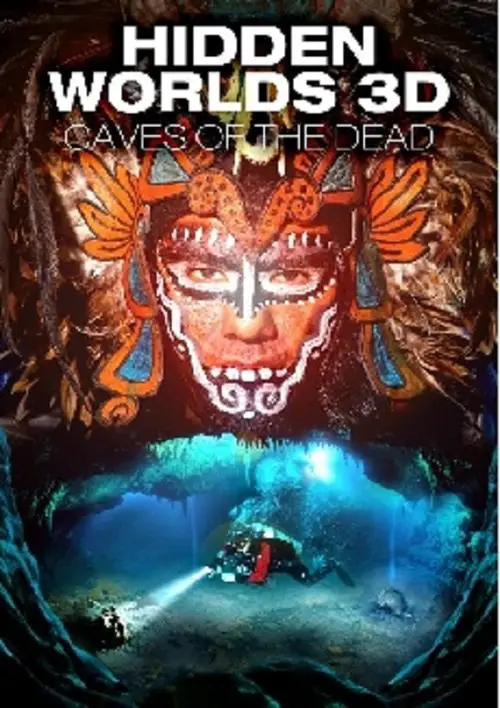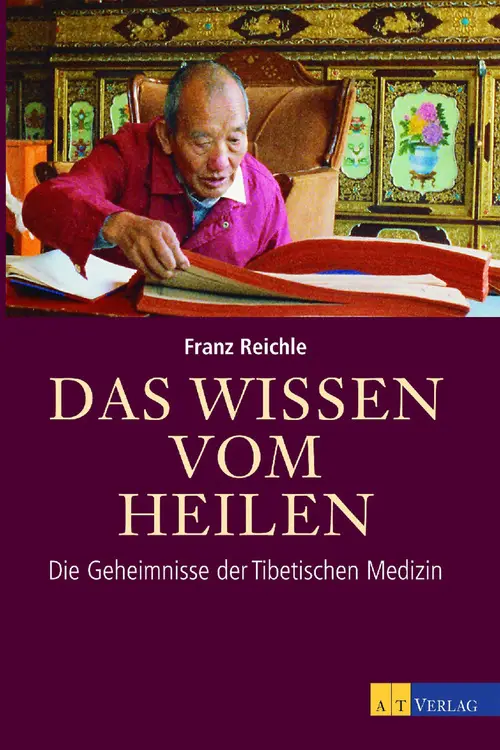Ways of Seeing (1972)
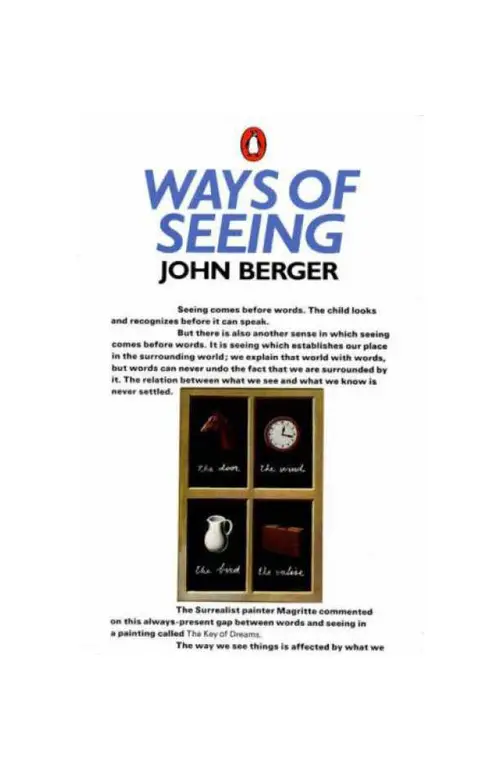
Similar movies
After the destructions that where caused by the tsunami, the insulars of an Indian archipelago are rolled over by another surge of ruination: the flood of international aid organizations, which pluck this premodern civilisation into the 21st century. The film depicts the partially heroic attempts of the Nicobareses, to live in this world without drowning.
Since the invention of cinema, the standard format for recording moving images has been film. Over the past two decades, a new form of digital filmmaking has emerged, creating a groundbreaking evolution in the medium. Keanu Reeves explores the development of cinema and the impact of digital filmmaking via in-depth interviews with Hollywood masters, such as James Cameron, David Fincher, David Lynch, Christopher Nolan, Martin Scorsese, George Lucas, Steven Soderbergh, and many more.
You loved the book; now see the places bestselling author Patricia Schultz captured so well. Join newlyweds Albin and Melanie Ulle as they embark on a transformational journey around the globe. Using Schultz's book as a guide, the Ulles explore the breathtaking beauty of the Himalayas, the eternal romanticism of Paris, the exotic mysteries of Peru and much more you won't want to miss.
African Cats captures the real-life love, humor and determination of the majestic kings of the savanna. The story features Mara, an endearing lion cub who strives to grow up with her motherâs strength, spirit and wisdom; Sita, a fearless cheetah and single mother of five mischievous newborns; and Fang, a proud leader of the pride who must defend his family from a once banished lion.
Robert Durst, scion of one of New Yorkâs billionaire real estate families, has been accused of three murders but never convicted. Brilliant, reclusive, and the subject of relentless media scrutiny, heâs never spoken publiclyâuntil now. During interviews with Andrew Jarecki, he reveals secrets of the case that baffled authorities for 30 years. In 2010, Jarecki made the narrative film All Good Things based on the infamous story of Robert Durst. After Durst saw the film, he contacted Jarecki wanting to tell his story. What began as a feature documentary ultimately became a six-part series as more and more of his incredible story was revealed.
The passion the original Star Wars trilogy inspires in its fans is unparalleled; but when it comes to George Lucas himself, many have found their ardor has cooled into a complicated love-hate relationship. This hilarious, heartfelt documentary delves deep into Lucasâs cultural legacy, asking all the tough questions. Has Lucas betrayed his masterwork? Should he just have left the original trilogy alone? Is The Phantom Menace so bad it should carry a health warning? Utilizing interviews taken from over 600 hours of footage, and peppered with extraordinary Star Wars and Indiana Jones recreations lovingly immortalized in song, needlepoint, Lego, claymation, puppets and paper-mâché, above all this film asks the question: who truly owns that galaxy far, far awayâthe man who created it, or the fans who worship it?
In the mid-1990's, spurred on by both the sudden world-domination of bands such as Oasis and Prime Minister Tony Blair's "Cool Brittania" campaign, British culture experienced a brief and powerful boost that made it appear as if Anglophilia was everywhere--at least if you believed the press. Pop music was the beating heart of this idea, and suddenly, "Britpop" was a movement. Oasis, their would-be rivals Blur, Pulp, The Verve, and many more bands rode this wave to international chart success. But was Britpop a real phenomena, or just a marketing ploy? This smart and often hilarious documentary probes the question with copious interviews from Noel and Liam Gallagher of Oasis, Pulp's Jarvis Cocker, Damon Albarn of Blur, Sleeper's Louise Wener, and many other artists and critics who suddenly found themselves at the cultural forefront.
In GLOBAL METAL, directors Scot McFadyen and Sam Dunn set out to discover how the West's most maligned musical genre - heavy metal - has impacted the world's cultures beyond Europe and North America. The film follows metal fan and anthropologist Sam Dunn on a whirlwind journey through Asia, South America and the Middle East as he explores the underbelly of the world's emerging extreme music scenes; from Indonesian death metal to Chinese black metal to Iranian thrash metal. GLOBAL METAL reveals a worldwide community of metalheads who aren't just absorbing metal from the West - they're transforming it - creating a new form of cultural expression in societies dominated by conflict, corruption and mass-consumerism.
Imagine a world where video games reign supreme. Five story buildings filled with arcade cabinets, old and new, inundate the streets. Welcome to downtown Tokyo, Japan. A place where the arcades of the 80s and 90s not only still exist, but thrive and have evolved into an elaborate, unmatchable gaming experience. 100 Yen is a historical documentary about the evolution of arcades and the culture surrounding it - from the birth of arcades to the game centers that still thrive today. With a predominant focus on the three major arcade genres, Shooting games, Fighting games and Rhythm games, 100 Yen explores the culture and evolution of arcades through the past and present. Featuring interviews with industry professionals, game programmers and designers, casual gamers and gaming icons from Japan, Canada, and the USA.
Documentary - COUNTERFEIT CULTURE is a one-hour documentary that explores the dangerous and sometimes deadly world of fake products. An industry that once dealt in imitation designer handbags and shoes has exploded into a global epidemic of counterfeit pharmaceuticals, foods, toys, electronic goods, car parts and microchips. COUNTERFEIT CULTURE challenges consumers to take a deeper look at what appears to be harmless knock-offs at bargain prices. - Ann-Marie MacDonald, Tim Phillips, Todd Gilmore
The film discusses the traits and originators of some of metal's many subgenres, including the New Wave of British Heavy Metal, power metal, Nu metal, glam metal, thrash metal, black metal, and death metal. Dunn uses a family-tree-type flowchart to document some of the most popular metal subgenres. The film also explores various aspects of heavy metal culture.
The film about Max Bill (1908-1994) moves between the dynamic fields of art, aesthetics and politics. Max Bill was probably the most important swiss artist of the 20th century and the most famous student to come out of the legendary Bauhaus in Dessau. He was an ardent anti-fascist and all his avant-garde work as an artist, sculptor, architect and typographer showed a social responsibility and environmental awareness right through his life. His views have become incredibly topical.
Chronicles the history, ideology and aesthetic of Norwegian black metal - a musical subculture infamous as much for a series of murders and church arsons as it is for its unique musical and visual aesthetics. This is the first (and only) film to truly shed light on a movement that has heretofore been shrouded in darkness and rumor and obscured by inaccurate and shallow depictions. Featuring exclusive interviews and verité with the musicians, a wealth of rare, seldom seen footage from the "Inner Circle's earliest days, Until the Light Takes Us explores every aspect of the controversial movement that has captured the attention of the world. This is the movie that gets inside the minds and hearts of black metal's musicians.
Helvetica is a feature-length independent film about typography, graphic design and global visual culture. It looks at the proliferation of one typeface (which will celebrate its 50th birthday in 2007) as part of a larger conversation about the way type affects our lives. The film is an exploration of urban spaces in major cities and the type that inhabits them, and a fluid discussion with renowned designers about their work, the creative process, and the choices and aesthetics behind their use of type.
This documentary offers a rare glimpse of the legendary Soviet filmmaker, Andrei Tarkosvky, at work. Tarkovsky made only seven films in his brief, but brilliant, career; Michal Leszczylowski's respectful movie chronicles him at work on his last film, The Sacrifice. Offering insight into Tarkovsky's working methods and transcendental aesthetics, the movie is a compelling account of the difficulties of film production. In the case of an uncompromising and visionary filmmaker like Tarkovsky, the practical problems of filmmaking are only magnified, as cast and crew struggle to realize the ambitious concepts in Tarkovsky's mind.
While LANGUAGE OF LOVE illustrated general sex behaviour, MORE ABOUT THE LANGUAGE OF LOVE shows minority group attitudes towards sex. As in the first film, there is an expert panel of scientist, discussing and explaining the different parts of the film. The famous Danish sexologist couple Inge and Sten Hegeler are throughout the leading characters, while the others experts change in every sector. The headings are as follows: male and female homosexuality, aesthetics and sex, handicapped and sex, drugs and sex, pornography and sex, children and sex, and sex with old people. In the new film affliction and warmth are emphasised, particularly in the chapter showing coition between persons of the same sex.
In the year 2001 the acclaimed violin vituoso Julian Rachlin founded a festival of chamber music in Dubrovnik. He introduced a new and successful concept of gathering some of the most famous world musicians and letting them play the music that they personally enjoy. In 2008 the austrian filmmaker Georg Riha joined the festival to cinematically accompany the star violinist: Masterly, as usual, and in the highest aesthetics as well as in technical quality, he succeeded with this film composition to tape the magical atmosphere of the city at the sea and the relaxed artistic work of Julian Rachlin and his friends. See the Rectorâs Palace, rehearsals, the sea, conversations, sun and wind, concerts and a lot of fun.
A legendary entertainer and a pioneer of gay activism, Miwa was born Akihiro Maruyama. As a young singer, Miwa popularized androgyny as a fashion statement, fusing the masculine and the feminine into a signal of a new generation of aesthetics. This evolved into performing as a woman and living off-stage as a man. With glitter, wit, evening gowns, and enchanting storytelling, Miwa looks back over a 50-year career and a fascinating life in music, film and television.
On the surface, âBottoms Upâ is a documentary film that examines the newest booming trend in aesthetic surgery â big butts. Placed under a microscope, the film explores the mediaâs impact and other societal pressures that have propelled big butts from a cult fetish to a mainstream phenomenon.
Maestro, tells the story of how a group of people found refuge and a call for life outside the mainstream. What evolved was a scene that set the ground work for what was to come in dance music culture worldwide, a rare insight into the secret underground world. It's the first time this story is told in a motion Picture, included in the film are pioneer dance music DJs and producers, "founding fathers", its center being Larry Levan, as well as high-profile DJs of today. Opting for a more personal and candid approach, MAESTRO shows the true history of the people through a realistic creative aesthetic. Tracing the underground's dance origin, MAESTRO brings out a real understanding of this intense lifestyle, and the lives they lived and died for. Written by Anonymous
Catalan architect Antonio Gaudà (1852 - 1926) designed some of the world s most astonishing buildings, interiors, and parks; Japanese director Hiroshi Teshigahara constructed some of the most aesthetically audacious films of the second half of the twentieth century. Here, their artistry melds in a unique, enthralling cinematic experience. Less a documentary than a visual poem, Teshigahara's Antonio Gaudà takes viewers on a tour of Gaudàs truly spectacular architecture, including his massive still-unfinished masterpiece, the Sagrada Familia cathedral, in Barcelona. With camerawork as bold and sensual as the curves on his subject s organic surfaces, Teshigahara immortalizes Gaudà on film.
Before Lance Armstrong, there was Greg LeMond, who is now the first and only American to win the Tour de France. In this engrossing documentary, LeMond looks back at the pivotal 1986 Tour, and his increasingly vicious rivalry with friend, teammate, and mentor Bernard Hinault. The reigning Tour champion and brutal competitor known as âThe Badger,â Hinault âpromisedâ to help LeMond to his first victory, in return for LeMond supporting him in the previous year. But in a sport that purports to reward teamwork, itâs really every man for himself.
By the mid-1980s, the fabled animation studios of Walt Disney had fallen on hard times. The artists were polarized between newcomers hungry to innovate and old timers not yet ready to relinquish control. These conditions produced a series of box-office flops and pessimistic forecasts: maybe the best days of animation were over. Maybe the public didn't care. Only a miracle or a magic spell could produce a happy ending. Waking Sleeping Beauty is no fairy tale. It's the true story of how Disney regained its magic with a staggering output of hits - "Little Mermaid," "Beauty and the Beast ," "Aladdin," "The Lion King," and more - over a 10-year period.
The German film director Werner Herzog sets out to the Scottish Highlands to make a documentary, "Enigma of Loch Ness", exploding the myth of the Loch Ness Monster. Meanwhile, another documentary film crew is making a film about Werner Herzog, and we see the production of "Enigma" from their point of view. Shooting on a rented boat, tensions begin to rise as director Herzog and his producer, Zak Penn, find themselves at cross-purposes on the black surface of Loch Ness. Things get very edgy when the film crew starts seeing shapes in the murky water.
The struggle to eradicate apartheid in South Africa has been chronicled over time, but no one has addressed the vital role music plays in this challenge. This documentary by Lee Hirsch recounts a fascinating and little-known part of South Africa's political history through archival footage, interviews and, of course, several mesmerizing musical performances.
49 Up is the seventh film in a series of landmark documentaries that began 42 years ago when UK-based Granada's World in Action team, inspired by the Jesuit maxim "Give me the child until he is seven and I will give you the man," interviewed a diverse group of seven-year-old children from all over England, asking them about their lives and their dreams for the future. Michael Apted, a researcher for the original film, has returned to interview the "children" every seven years since, at ages 14, 21, 28, 35, 42 and now again at age 49.In this latest chapter, more life-changing decisions are revealed, more shocking announcements made and more of the original group take part than ever before, speaking out on a variety of subjects including love, marriage, career, class and prejudice.
Wim Wenders says, "If in our century something sacred still existed⦠if there were something like a sacred treasure of the cinema, then for me that would have to be the work of the Japanese director, Yasujiro Ozu. He made fifty-four films. Silent films in the Twenties, black-and-white films in the Thirties and Forties, and finally colour films until his death on December 12th, 1963, on his sixtieth birthday. Ozu's work does not need my praise and such a sacred treasure of the cinema could only reside in the realm of the imagination. And so, my trip to Tokyo was in no way a pilgrimage. I was curious as to whether I still could track down something from this time, whether there was still anything left of this work. Images perhaps, or even people⦠Or whether so much would have changed in Tokyo in the twenty years since Ozu's death that nothing would be left to find.
Four men from a nomadic Tibetan tribe undertake their annual, ritualistic pilgrimage to a sacred salt lake. Salt gathered in this traditional fashion will be sold to provide the economic livelihood of the tribe for the coming year. The journey, necessary for the group's survival, also incorporates a number of rituals necessary for their culture to survive in the modern world.
Filmed over a decade, Brief Encounters follows internationally renowned photographer Gregory Crewdsons quest to create his unique, surreal, and incredibly elaborate portraits of suburban life. He sets a house on fire, builds 90 foot sets with crews of sixty, shuts down city streets...all in the service of his haunted image of American life, and his own anxieties, dreams and inner desires. Brief Encounters is an intimate portrait of one of the most heralded image-makers of our time.
The legendary photographer William Klein has designed this fascinating book on fashion photography, with a selection of images from throughout his career, including material from his films. Though Klein claims roots in areas as diverse as painting, street photography, the tabloids, and B movies, his fashion work has been known since the fifties and sixties and has been a constant in his career.
In July 1969, the space race ended when Apollo 11 fulfilled President Kennedyâs challenge of âlanding a man on the Moon and returning him safely to the Earth.â No one who witnessed the lunar landing will ever forget it. Al Reinertâs documentary For All Mankind is the story of the twenty-four men who traveled to the moon, told in their words, in their voices, using the images of their experiences. Forty years after the first moon landing, it remains the most radical, visually dazzling work of cinema yet made about this earthshaking event.
Our planet has amazing power, and yet that's rarely mentioned in our history books. This series tells the story of how the Earth has influenced human history, from the dawn of civilisation to the modern industrial age. It reveals for the first time on television how geology, geography and climate have been a far more powerful influence on the human story than has previously been acknowledged. A combination of epic story telling, visually stunning camerawork, extraordinary locations and passionate presenting combine to form a highly original version of human history.
Based on the journal of Knud Rasmussen's "Great Sled Journey" of 1922 across arctic Canada. The film is shot from the perspective of the Inuit, showing their traditional beliefs and lifestyle. It tells the story of the last great Inuit shaman and his beautiful and headstrong daughter; the shaman must decide whether to accept the Christian religion that is converting the Inuit across Greenland.
ARMADILLO is an upfront account of growing cynicism and adrenaline addiction for young soldiers at war. Mads and Daniel are on their first mission in Helmand, Afghanistan. Their platoon is stationed in Camp Armadillo, right on the Helmand frontline, fighting tough battles against the Taliban. The soldiers are there to help the Afghan people, but as fighting gets tougher and operations increasingly hairy, Mads, Daniel and their friends become cynical, widening the gap between themselves and the Afghan civilisation. Mistrust and paranoia set in causing alienation and disillusion. Armadillo is a journey into the soldierâs mind and a unique film on the mythological story of man and war, staged in its contemporary version in Afghanistan.
© Valossa 2015–2025
| Privacy Policy
